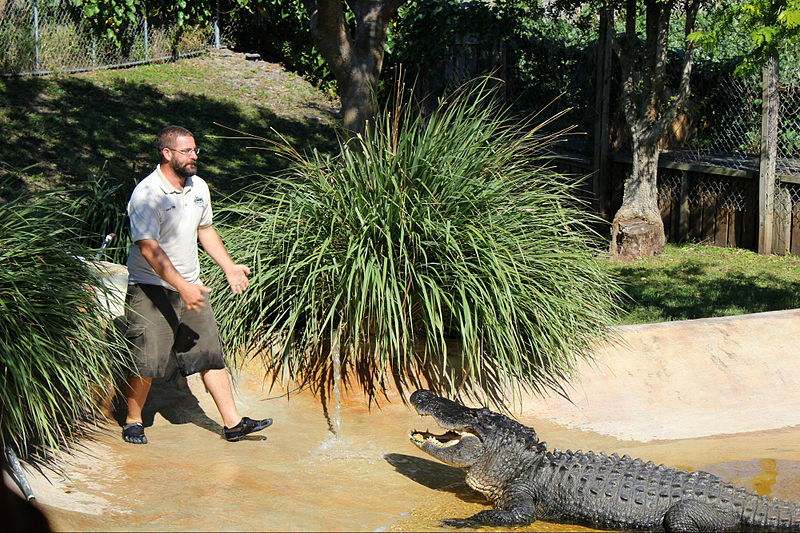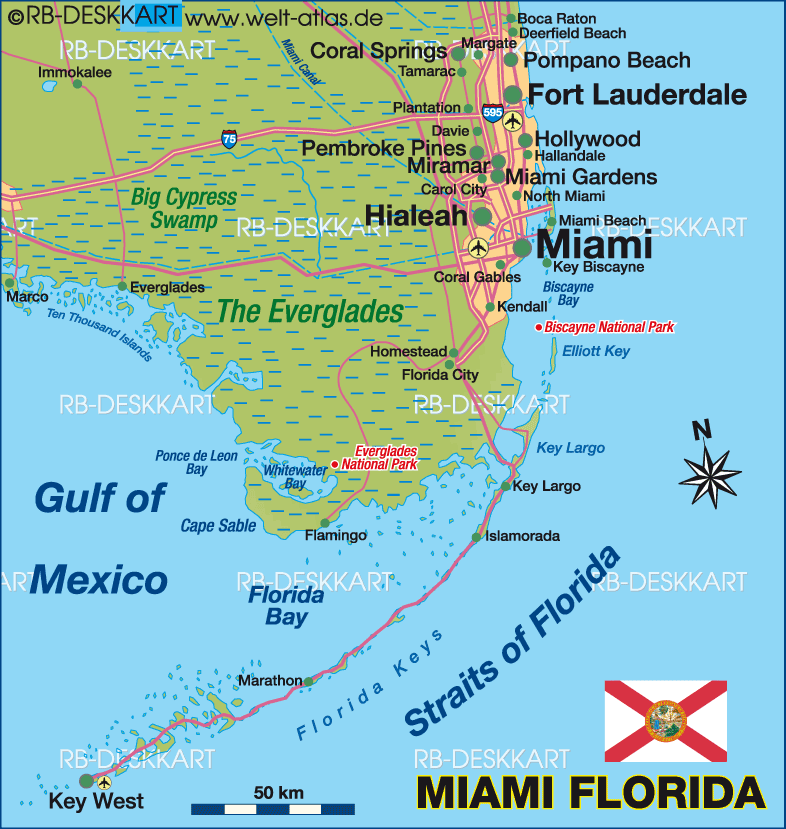No city is closer to the extensive wild space known as the Everglades than Miami, a 2,500,000 million population urban sprawl that includes Dade County in the conurbation known as Miami-Dade, a mere 45 miles from the vast and wild Everglades. The Everglades, by contrast, is the single most costly environmental preservation project in American history, originally, 4,000 square miles of undrained marshes (now reduced by roughly half), rivers, canals and swampland filled with alligators, manatees, and panthers.

[Thoughts of Miami often turn to the Everglades, a vast region of swamplands surrounding the urban areas to the east–the northern Keys, Miami, Lauderdale, and West Palm. (J. Palumbo)] Miami is part of an urban sprawl that stretches north to Hialeah, Pompano Beach, Boca Raton, and Delray Beach, south to Key Biscayne and the island of Key Largo, and west until all roads halt abruptly not far from old Route 1 (named in 1926 as the first numbered highway in the U. S.) and south of Tamiami Trail (Tampa to Miami), because the Everglades and Big Cypress Swamp were so clearly unavailable for residential or commercial development.  [This map (above) reveals the way the Everglades almost appear too be pushing Miami and its surrounding urban areas off the eastern coast of Florida and into the Atlantic Ocean.]
[This map (above) reveals the way the Everglades almost appear too be pushing Miami and its surrounding urban areas off the eastern coast of Florida and into the Atlantic Ocean.]